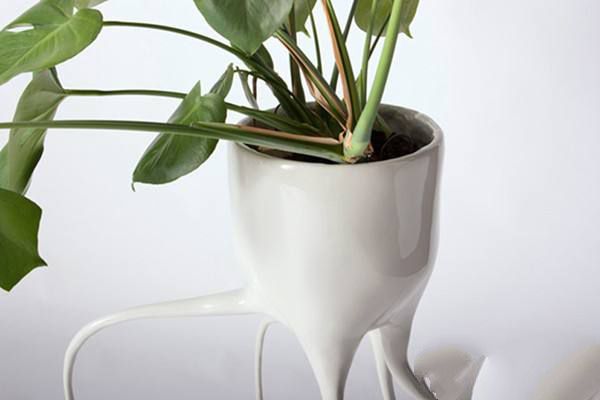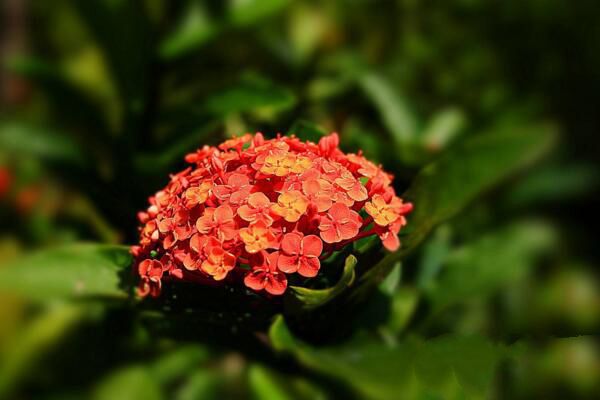How to manage the flowers in the greenhouse? Common problems and Countermeasures of Flower planting in greenhouse

At present, greenhouse flower planting is already a good industry, some of which are well managed, planting hundreds of mu or even thousands of mu. There are also few plants, which mainly depends on your business ideas and methods. Next, let's take a look at the common problems and countermeasures of flower planting in greenhouse.
I. Analysis of common problems in flower planting
1.1 moisture
The growth of flowers mainly depends on soil moisture, which consumes a lot of water under transpiration. During the period of flower growth, if the water absorbed is greater than the consumption, it will lead to plant growth problems, and the ability of drought resistance will gradually decrease, and the flower buds will fall off prematurely. Serious even rotten roots because of too much moisture. When the water absorption of flowers is less than the consumption, dehydration is easy to occur, which can not guarantee the normal growth and development.
1.2 temperature
During the period of flower growth, it has a certain heat resistance, if the temperature is too high, the heat exceeds the physiological bearing range of flowers, resulting in a serious threat to the growth of flowers. If the temperature is too low, it will reduce the growth efficiency of flowers.
1.3 nutrient elements
If the nutrient elements are insufficient during flower development, it will slow down the growth rate of plants and make it difficult to improve the ability of resistance to diseases and insect pests. Usually during the period of flower planting, it is necessary to formulate targeted fertilizer application programs according to the actual nutritional needs to promote the growth of plants. If it can not be fertilized reasonably, it will affect the overall development of the plant. First, if enough nitrogen fertilizer is not applied, the plant will dry up, the stems and leaves will break, and the number of flowers will be small. Second, if enough phosphate fertilizer is not applied, the plant will appear dark green, and the growth rate will slow down, and the leaf veins in the lower part of the plant will begin to yellowing, showing typical symptoms of malnutrition. Third, if potash fertilizer can not be applied reasonably, disease spots will appear on the leaves of the plant, and the leaf tip will begin to wither and yellow, and the dead parts will gradually expand. Fourth, in the case of lack of magnesium, the lower part of the plant will appear yellowing, under the influence of withered spots, resulting in the decrease of flower growth efficiency. Fifth, in the absence of calcium, the young leaves of the plant will be deformed.
1.4 Analysis of fertilization problems
Fertilizer during the period of flower growth is the main element to ensure the normal growth of plants, but at present, some flower farmers can not use fertilizer reasonably according to soil conditions, and can not adopt scientific fertilizer supplement to solve the problem. To a certain extent, the growth of flowers is seriously affected. At the same time, flower farmers can not choose fertilizer according to the growth characteristics and needs of flowers, in the actual planting process, there are often serious problems affected by various factors. In addition, in the process of flower planting, it is difficult to create a diversified management mechanism and can not meet the current flower growth needs if we fail to carry out topdressing work reasonably according to the growth characteristics and needs of the plant.
II. Analysis on the Countermeasures for solving the problems of Flower planting
2.1 Scientific control of water temperature
In the work of flower planting, it is necessary to make clear the characteristics and requirements of nutrient absorption of plants, to maintain the stability of water absorption in a reasonable way, and to comprehensively grasp and analyze the types of flowers after understanding the characteristics of water. First of all, drought-tolerant flowers can continue to survive in dry soil, such as rose flowers, in order to strictly control moisture, it is necessary to control the number of moisture to about 5 times per year and manage them according to their specific growth characteristics. to avoid affecting the good growth of flowers. Secondly, the drought resistance of semi-drought-tolerant flowers is worse than that of drought-tolerant flowers, so the moisture should be strictly controlled according to the growth characteristics of flowers to avoid affecting the normal growth of flowers. Thirdly, neutral flowers can be irrigated according to the requirements of soil moisture, and can not grow in fully wet soil to avoid affecting the good survival of flowers. Finally, for moisture-resistant flowers, it is necessary to ensure the wettability of the soil to avoid affecting the good growth of flowers. In general, the water temperature needs to be controlled at about 5 ℃. When watering, the difference between soil temperature and water temperature is not 5 ℃, and the water content is about 70%, so as to avoid freezing damage.
2.2 strict control of temperature
During the period of flower growth, it is necessary to strictly manage and control the ambient temperature, clarify the temperature requirements of different flowers, and implement the management work in a reasonable way. For flowers with strong heat resistance, it is necessary to make clear the temperature control requirements of the environment and formulate a perfect management plan according to the local climate characteristics. During this period, we should also manage the flowers with low heat resistance, find the problems in temperature control in time, take reasonable measures to solve the problems, innovate the management contents and measures, and gradually improve the level of flower temperature control. During this period, but also combined with cooling methods to solve the problem, if the temperature is too high, timely ventilation, but also can spray water on the leaf surface to achieve the good purpose of cooling. In temperature management, it is necessary to follow the principle of 15: 26 ℃ in daytime and 12: 16 ℃ at night.
2.3 Fertilizer control measures
The application of flower fertilizer should follow the diversified management principles, clarify the contents and requirements of fertilizer application, solve problems in a reasonable way, and innovate the form of management. First of all, fertilizer should be applied to flowers every growing season. Especially in spring and winter, it belongs to the period of exuberant flower growth, so it is necessary to reasonably control the amount of fertilizer. Secondly, it is necessary to follow the principle of appropriate and appropriate amount to ensure the science and rationality of fertilizer application and promote the good growth of flowers. The fertilization ratio was N ∶ P ∶ Kraft 1 ∶ 1 ∶ 2 or 1 ∶ 1 ∶ 3.
2.4 Disease and pest control
During the growth of roses, powdery mildew, downy mildew and red spiders are easy to appear. Powdery mildew can be treated by spraying 41% carbendazim sulfur suspension, mildew and frost can be sprayed with DuPont Kelu 500x, Pulick 700x and Anke Manganese Zinc 700x. Red spiders can be controlled by 3000 times of insect mites.
2.5 measures to deal with freezing injury
In the process of actual cultivation, we should pay attention to the weather changes at any time and make corresponding measures according to the weather forecast, such as adding plastic film in the shed or adopting hot stove to increase temperature or smoke and prevent frost to reduce the occurrence of frost damage. After the occurrence of frost injury, combined with the current actual working situation, the flowers with more serious frost injury should be dealt with, so as to improve the quality of flowers.
2.6 reasonably planned florescence
In general, the florescence of different varieties should be strictly calculated and planned, and water and fertilizer should be controlled to ensure that the stock is not out of stock in the peak sales season or holidays. During this period, the flowering period can be strictly managed by pruning and pressing branches at intervals, so as to improve the economic benefits of flowers.
In the process of flower planting, it is necessary to strictly manage and control temperature and moisture, coordinate the relationship between fertilizers, do a good job of adding nutrient elements, and follow the principle of timely and appropriate amount in the process of using fertilizer. to ensure the appropriate addition of fertilizer, so as to improve the effect of nutrition management and maintain the normal growth of flowers.
- Prev

How to change the flower pot, the concrete steps of changing the flower pot
How to change the flower pot, the concrete steps of changing the flower pot
- Next

Why are novice watering flowers easy to die of waterlogging and drought? The principle of watering flowers and plants
Why are novice watering flowers easy to die of waterlogging and drought? The principle of watering flowers and plants
Related
- What if the leaves of potted flowers turn yellow?
- Florescence Control of several Flowers
- Anti-freezing technology and post-freezing nursing technology of flowers
- What is the classification of flowers? What are the common methods of flower classification?
- Prevention and control of alkali and acid damage of flowers in courtyard
- Technology of Anti-freezing and restoring growth of Flower seedlings in greenhouse and greenhouse
- How does flower fertilization not hurt the root? Fertilization technology of flowers
- Key points of disinfection in flower greenhouse
- Several pesticides that are banned or used cautiously in flowers
- How to fertilize the flowers that watch the leaves?

